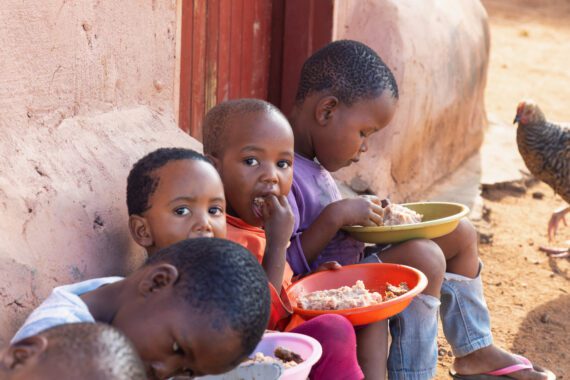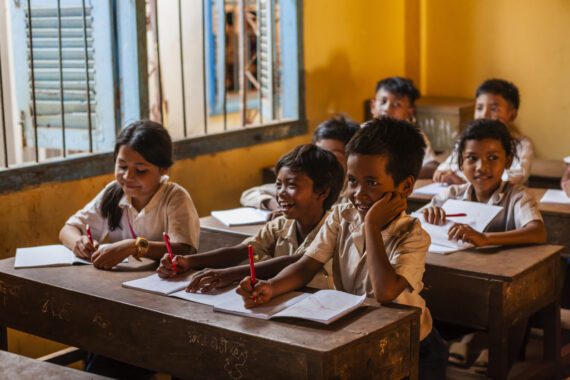Yemen is a hunger hotspot “of highest concern” for the period June through November 2023, according to the most recent update prepared by the World Food Programme (WFP) and the Food and Agriculture Organization (FAO).
The update describes conditions in Yemen and other countries most severely impacted by hunger in grim terms: large numbers of people are facing starvation, are projected to face starvation, or are confronting critical food insecurity in a context of aggravating factors that are likely to worsen situations that are already life-threatening. Communities trapped in such emergencies are urgently in need of help to prevent additional deaths and relieve suffering.
Nearly 17 million people in Yemen—53 percent of the entire population—need lifesaving humanitarian assistance. Of these, 6.1 million people are on the verge of famine. Only South Sudan and Syria have higher percentages of the population in need.
According to the WFP/FAO humanitarian update, “Acute food insecurity will remain at critical levels amid elevated fuel and food prices and an anticipated funding shortfall.”
The 2023 Humanitarian Response Plan for Yemen calls for $2.2 billion for food security and agriculture and $398 million for nutrition programs. But WFP reported in August 2023 that its needs-based plan for the six-month period October 2023 through March 2024 is only 15 percent funded.
As a result of this resource shortfall, most of WFP’s Prevention of Acute Malnutrition program has been suspended since August 2023. The program serves 2.4 million young children and pregnant or lactating women and girls across the country. The financial crunch comes at a time when WFP staff are reporting an increasing number of patients admitted to clinics with severe and moderate acute malnutrition.
A disproportionate number of those who die from causes related to hunger and malnutrition are very young children. According to Doctors Without Borders (known by its French acronym, MSF), acute malnutrition is the main cause of death among children under 5 in Yemen. In August 2023, MSF reported that 2.2 million Yemeni children were suffering from acute malnutrition, citing data from the World Food Programme.
What are the causes of the humanitarian emergency?
The key drivers of hunger and malnutrition in Yemen are conflict and economic crisis.
Yemen has endured civil war since late in 2014. Soon thereafter, neighboring countries began to support one side or the other. Saudi Arabia has been conducting airstrikes for years in Yemen, and the United Arab Emirates (UAE) is another nation that has intervened.
The war has disrupted agricultural production since its beginning. Conflict has exacerbated the impact of food shortages during the so-called “lean season,” when food from one harvest has been consumed but the next harvest is not yet ready.
A truce was in effect from April 2022 through early October 2022. Outbreaks of violence have become less frequent since then, although the truce itself expired a year ago.
Still, the war has not ended. There were clashes between factions in March 2023, and efforts to negotiate a formal ceasefire continue. The latest humanitarian update indicates that access constraints caused by the conflict “remain a key impediment to humanitarian operations” and “the security situation remains highly volatile.”
A “protracted emergency”
Perhaps the saddest part of the almost unimaginable humanitarian tragedy in Yemen is that people are trapped in a so-called protracted emergency. We tend to assume that an “emergency” has an ending point. There is an urgent problem, but solutions are identified and implemented, and then conditions improve. The situation may return to normal, or it may be a “new normal,” but it is no longer an emergency. A protracted emergency, however, does not stabilize—people simply continue to endure emergency conditions.
The war and humanitarian crisis in Yemen are now almost a decade old. Increasingly around the world, conflicts and the hunger emergencies they create do not end with a formal agreement or peace treaty. Rather, countries or regions remain in some form of limbo, often for years.
Each conflict and its aftermath (or purported aftermath) has unique features. Civilians in one country may remain vulnerable to attacks by armed groups, whether these are rebel or separatist factions or just gangs. The continuing violence interferes with farmers’ ability to produce food. Another country may be largely peaceful, yet still have outbreaks of what some may call “contained” violence, meaning that they subside without major casualties rather than ignite a larger conflict.
It is difficult for any country emerging from conflict to rebuild its physical infrastructure and its economy. This is even harder when people cannot be confident that the conflict is over.
Since the war in Yemen began in 2014, Bread has worked to draw attention to the horrific conditions facing civilians and to recommend how the United States can help. In 2019, for example, Bread organized a letter signed by 100 faith organizations from all 50 states that called on the U.S. government to promote peace rather than supply arms to combatants.
Michele Learner is managing editor, Policy and Research Institute, with Bread for the World.



